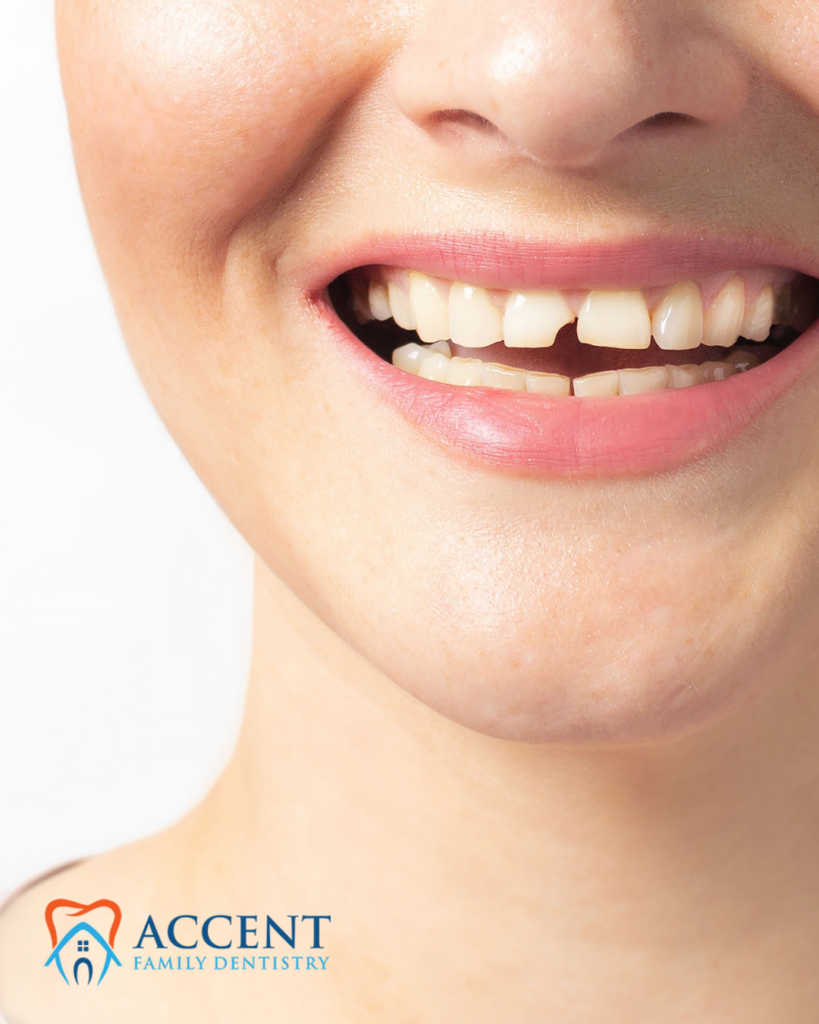Dental emergencies can strike when you least expect them, leaving you in pain or unsure of what to do next. Whether it’s a chipped tooth, a sudden toothache, a lost filling, or something else, knowing how to handle these situations at home can make all the difference until you can visit your dentist for emergency care. At Accent Family Dentistry in Angier, we want you to feel prepared to manage any dental crisis, so let’s explore how to handle common dental emergencies.
Understanding Dental Emergencies
Dental emergencies encompass a wide range of issues, from mild discomfort to severe injuries. But how do you know if your situation qualifies as an emergency? If you’re experiencing intense pain, excessive bleeding, or a dental injury that could worsen without prompt attention, it’s likely an emergency. Even less severe issues, like a chipped tooth or lost crown, require timely care to prevent complications.
Below, we’ll guide you through common dental emergencies and how to address them at home until you can see a dentist.
Toothaches: Finding Relief
Causes of Tooth Pain
Toothaches are one of the most common dental emergencies and can result from a variety of issues such as cavities, infections, or even a piece of food stuck between your teeth. Identifying the root cause of your pain can help determine your next steps.
Immediate Steps
- Rinse with Warm Salt Water: Mix a teaspoon of salt in a cup of warm water to rinse your mouth. This can reduce inflammation and help dislodge trapped food.
- Floss Gently: Use floss to carefully remove any debris stuck between your teeth.
- Apply a Cold Compress: If swelling accompanies the pain, applying a cold compress to your cheek can reduce discomfort.
While these steps can offer temporary relief, it’s essential to schedule an urgent dental appointment to address the underlying issue.
Chipped or Broken Teeth

What to Do
Accidents happen, and a chipped or broken tooth can be alarming. Here’s how to manage it:
- Save the Pieces: If possible, locate and save any broken fragments of your tooth.
- Rinse Your Mouth: Gently rinse with warm water to clean the area.
- Control Bleeding: If there’s bleeding, apply gentle pressure with a piece of gauze until it stops.
- Protect the Tooth: If the break has left a jagged edge, cover it with dental wax to protect your tongue and cheeks.
Promptly contact your dentist for further treatment, as leaving a broken tooth untreated can lead to infection or further damage.
Knocked-Out Teeth
Acting Quickly
Losing a tooth can be distressing and painful, but acting quickly increases the chances of saving it. Follow these steps:
- Handle with Care: Pick up the tooth by the crown (the chewing surface) and avoid touching the root.
- Rinse Gently: If the tooth is dirty, rinse it gently with water—don’t scrub or remove tissue fragments.
- Reinsert the Tooth: If possible, try placing the tooth back in its socket. Hold it in place by biting down gently on a clean cloth.
- Keep the Tooth Moist: If reinsertion isn’t possible, place the tooth in a container of milk or your saliva. Some pharmacies also carry tooth preservation kits.
Finally, be sure to contact your dentist immediately, as time is critical in saving a knocked-out tooth.
Lost Fillings or Crowns
Temporary Fixes
Losing a filling or crown can leave your tooth vulnerable to damage and sensitivity. Here’s what to do:
- Keep the Area Clean: Rinse your mouth with warm water to remove debris.
- Protect the Tooth: For lost fillings, you can use dental cement, available at most drugstores, to cover the cavity temporarily. For a lost crown, try to reattach it with dental adhesive until you can see your dentist.
Avoid chewing on the affected side and schedule an appointment to have the restoration replaced.
Soft Tissue Injuries
Managing Bleeding and Pain
Injuries to the tongue, cheeks, or gums can occur from biting down too hard or sustaining a blow to the face. Follow these steps:
- Rinse with Salt Water: This helps clean the area and prevent infection.
- Apply Pressure: Use a piece of gauze or a clean cloth to apply pressure and stop the bleeding.
- Use a Cold Compress: Reduce swelling and pain by holding a cold compress to the outside of your cheek.
If the bleeding doesn’t stop after 15 minutes of continuous pressure, seek immediate medical attention.
Broken Orthodontic Appliances
Handling Wires and Brackets
If you wear braces, broken wires or brackets can cause discomfort and even damage your mouth. Here’s what to do:
- Cover Sharp Ends: Use orthodontic wax to cover any sharp wires and prevent irritation.
- Avoid Adjustments: Don’t try to bend the wire back into place yourself, as this can worsen the issue.
Contact your orthodontist promptly to schedule a repair.
When to Seek Emergency Care

While many dental emergencies can be managed temporarily at home, some situations require immediate professional care. These include:
- Severe pain that doesn’t improve with at-home remedies.
- Excessive bleeding that doesn’t stop.
- Swelling or signs of infection, such as fever or a bad taste in your mouth.
- A tooth that has been knocked out or displaced.
A Confident Smile Starts with Quick Action, Give our Team a Call Today!
Handling dental emergencies at home is all about being prepared and knowing when to seek professional care. At Accent Family Dentistry, we’re here to help you through every dental challenge. Whether you’re facing a dental emergency or need routine care, don’t wait. Contact us today by giving us a call at 919-639-3911 to schedule an appointment and let us restore your smile!
